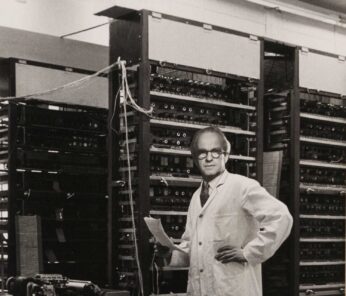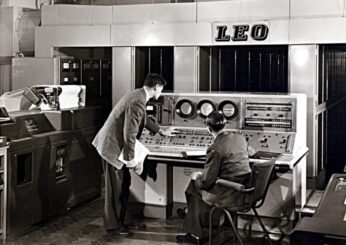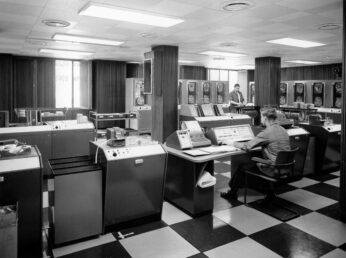The world’s first computer used for business purposes was the Lyons Electronic Office, or LEO. This was begun by the company J. Lyons & Co Ltd who ran tea shops, restaurants and made and sold bakery products all over the UK. They had a massive administration staff, and as a company believed that automation was the answer to running efficiently. This innovation began the understanding that businesses could use a computer.
In the late 1940s, Lyons’ Systems Researcher John Simmons sent people out to research using computers for the routine task of accounting and discovered the EDSAC at Cambridge University. Lyons decided to invest £3,000 (£74,000 in today’s money) in EDSAC and a new computer ran its first programme successfully in 1949.

The Lyons board decided that something like the EDSAC be built at their Cadby Hall Factory in West London, led by electronics engineer John Pinkerton. This was a brand-new type of machine. Whilst EDSAC was an automated calculator, LEO was an electronic office, automating office processes previously done by administrators. In November 1951 LEO was put to work for the first time on payroll, producing 40 payslips a minute.

It soon became apparent to the Lyons board that they had created a business computer reliable enough to sell, so they set up a separate company, LEO II in 1961. By 1963 LEO III had arrived and ran on transistors and tape drives instead of mercury valves. The Met Office and Handley Page were some of the companies that bought the technology for their own purposes.

By 1963, Lyons was in financial trouble, and sold LEO to company English Electric. The last LEO III machine ceased to operate in 1981 – it had been producing telephone bills for British Telecom.

Further links
We group our interviews by company, click here to see our interviews with people who worked with LEO and J. Lyons & Co.
Our collections about LEO compliment material held by other museums and archives, here are some links to further material at the University of Warwick Modern Records Centre:
- Interviews with Ray Shaw and John Daines, pioneers of LEO computers and members of the LEO Computers Society. See our link to Ray’s obituary above.
- Papers of John Simmons, statistician and LEO pioneer.
- More images of LEO can be viewed here.
The LEO Computers Society website can be viewed here. In 2023 they completed a project about LEO funded by the National Lottery Heritage Fund in partnership with the Centre for Computing History. Read their project blog.